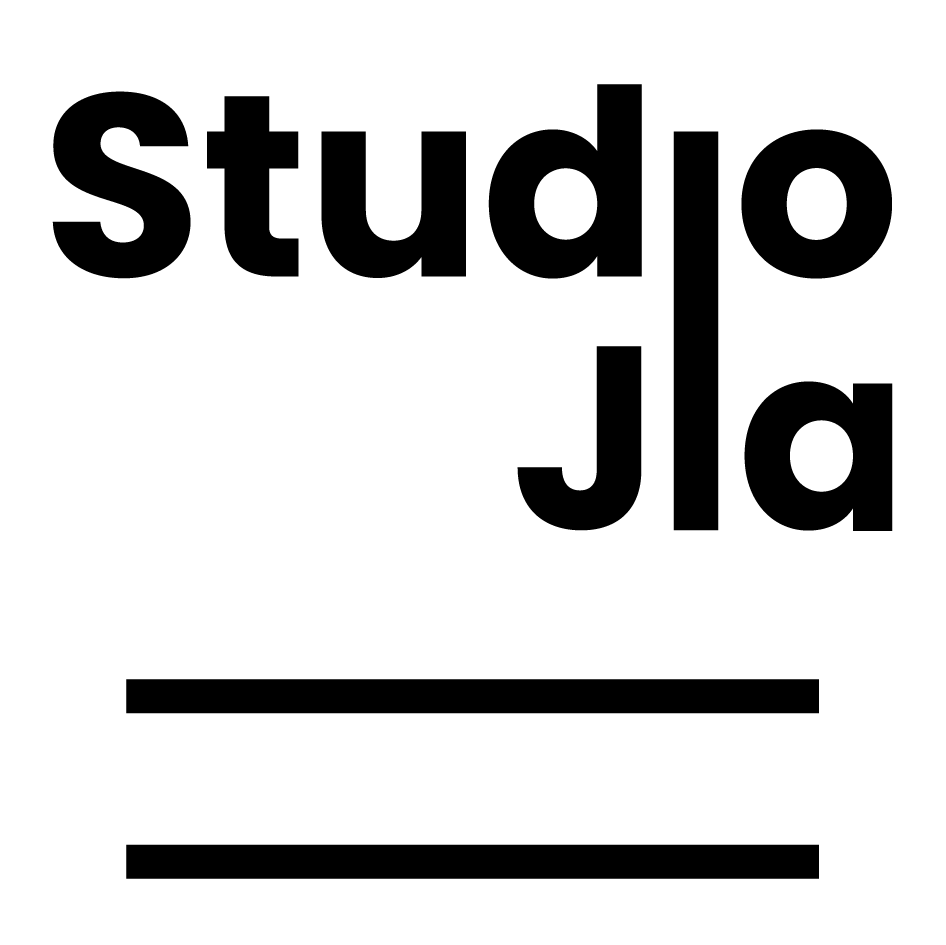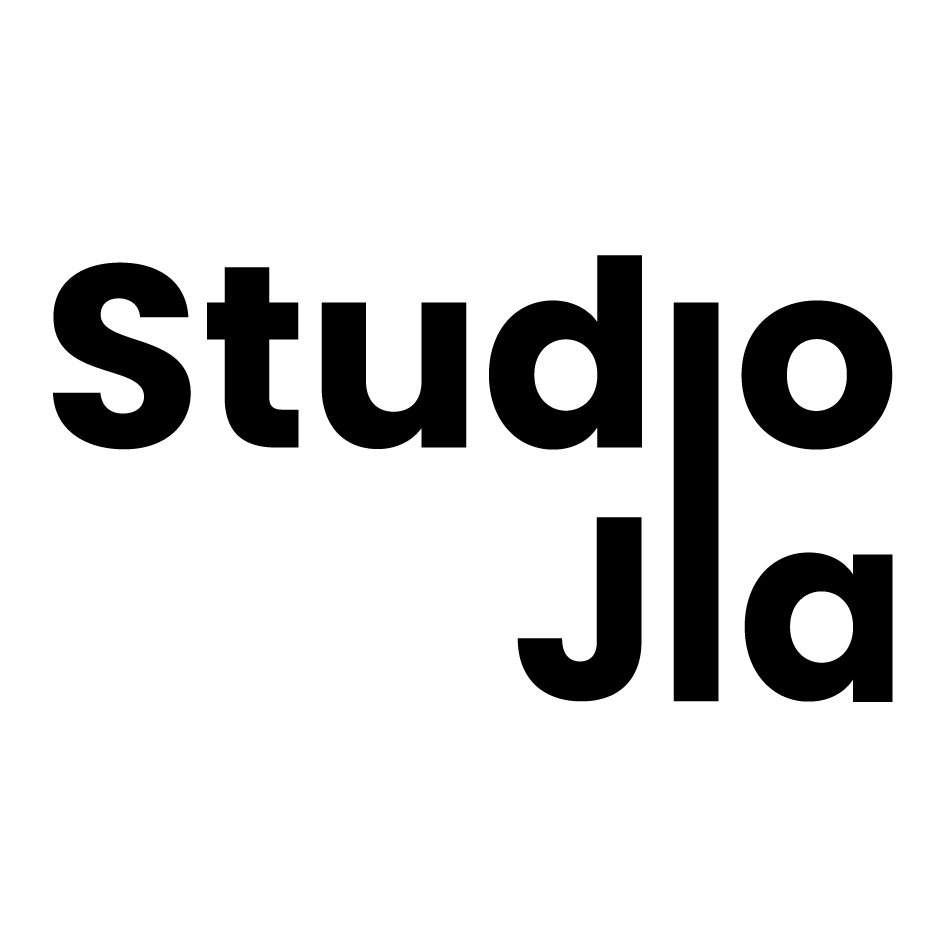5. Light of Shadows
Project at Harvard GSD
In Collaboration with Elissa Palmer, Sarah Hopper
Exhibited at Harvard Ceramics Studio Gallery 2022
Our investigation began with experimenting with additive manufacturing processes and experimenting with fabrication parameters such as speed and over-extrusion. We discovered that spherical geometries, or what we will refer to as Bubbles, could be created in two different ways, utilizing two different toolpaths. We decided to call these two toolpaths BLOB and SHELL.

BLOB follows the spiral path of a base cylindrical surface and slows to over-extrude material in the places where the bubbles are located. SHELL follows the boundary of the combined bubble and cylinder geometry and maintains a constant standard speed. It creates a hollow shell of the outer surface of the bubbles instead of a fully solid geometry. Through these two defined toolpath methods, we are able to create bubbles which look the same in their digital form but differ in characteristics in their physical form.
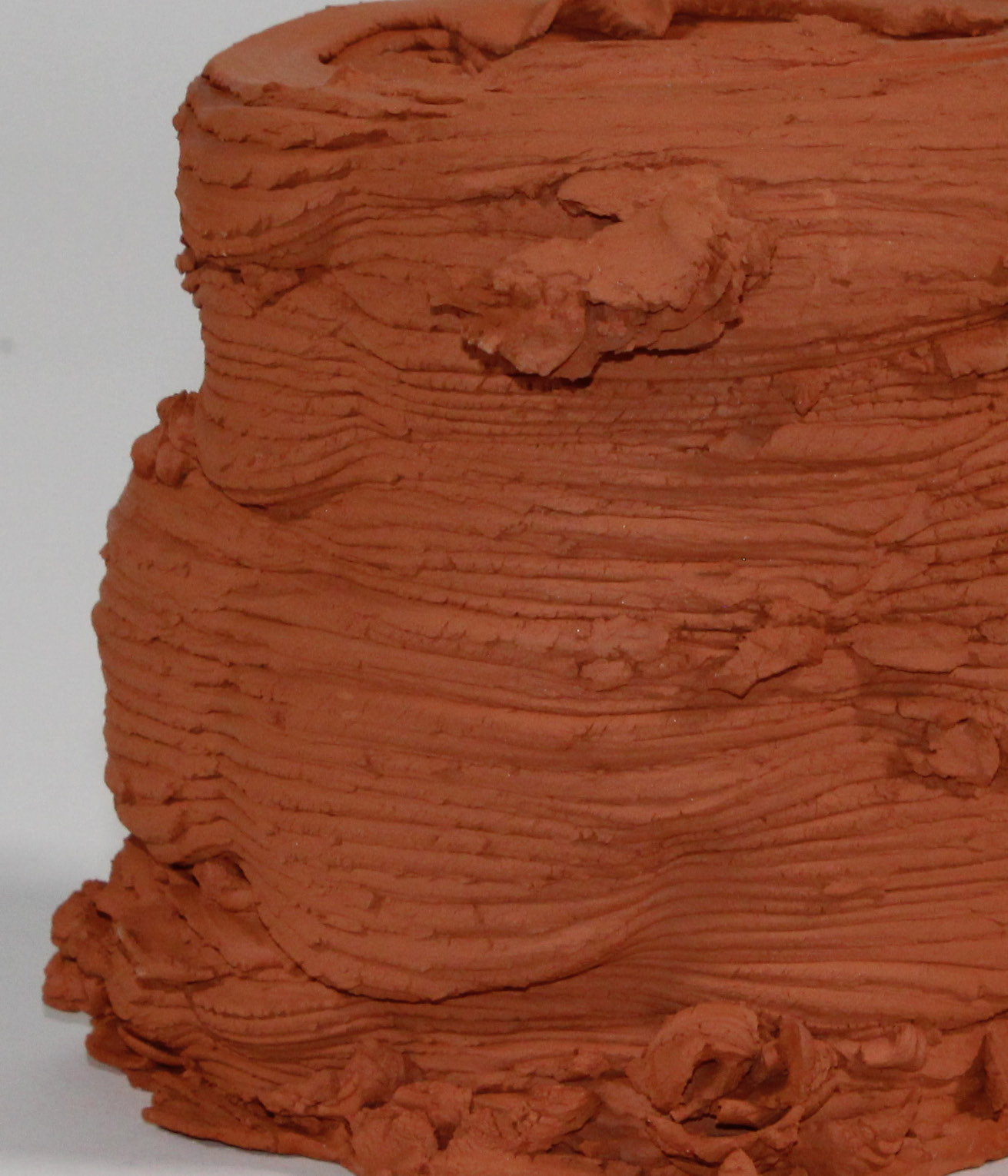
1. BLOB
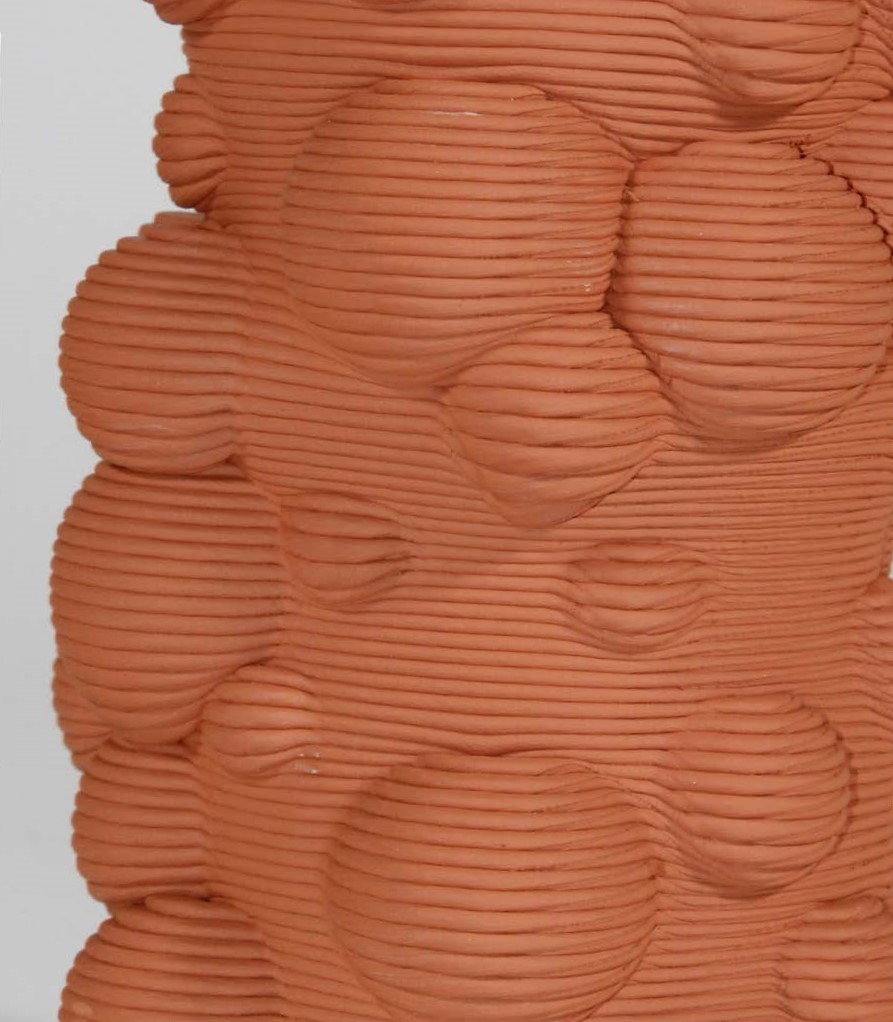
2. SHELL
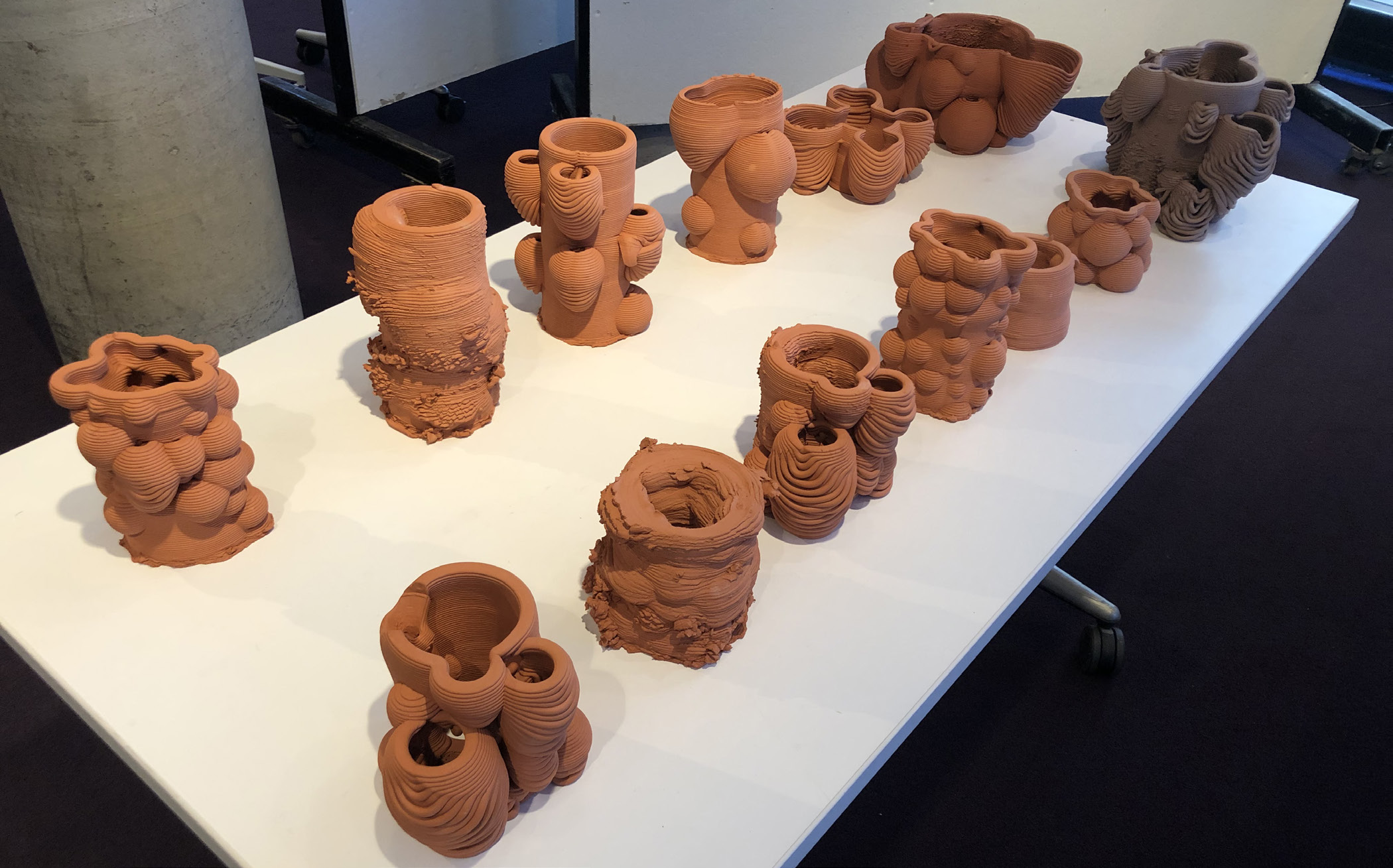
Test prints of different parameters displayed on table.
Rhinoceros digital
model
3D scan of physical print
overlay of digital and 3d scan
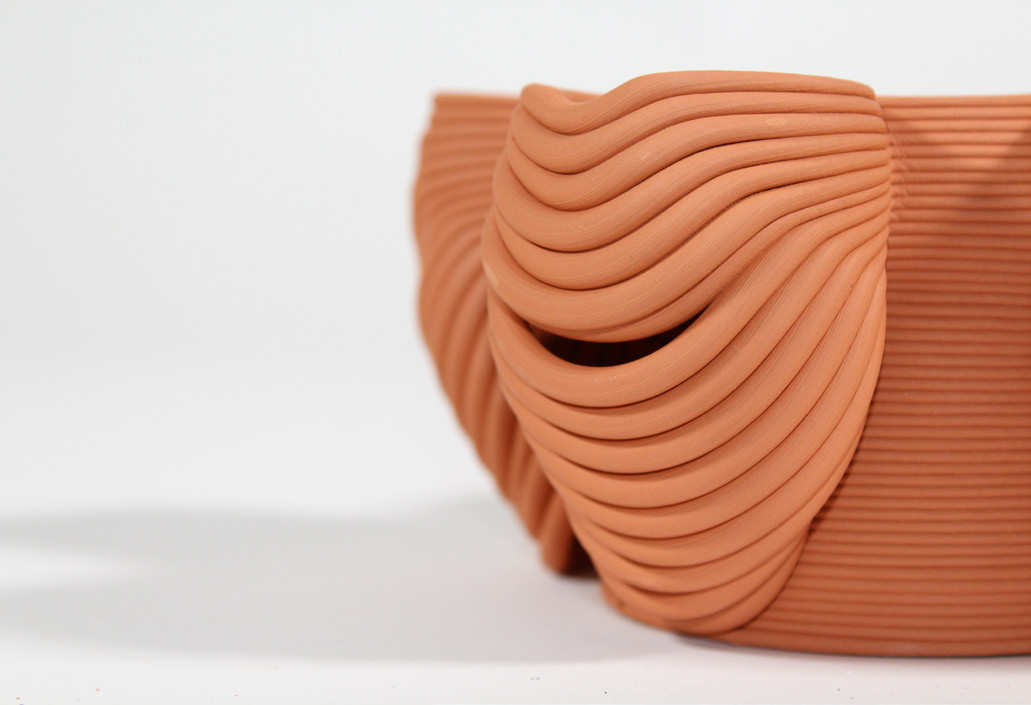


The lamp is composed of 6 printed cylinders and the lower cylinders are 2/3 BLOB, 1/3 SHELL to take advantage of the anchoring qualities that come with BLOB’s thickness and weight. The cylinders then transition to 1/3 BLOB, 2/3 SHELL and eventually end in the top piece that is created with only the SHELL toolpath to increase lightness and porosity as the floor lamp gets closer to eye-level.
The overall result is two twisting, growing, and shrinking ribbons of BLOB and SHELL. This final lamp is
a testament to the beautiful textural and light qualities created with these combined toolpaths and to the research that built our semi-predictable set of bubbles, holes, droops, and leafing. It is a testament to the possibilities and limits of robotic 3D printing and terra cotta. It is a testament of BLOBS of shadow and SHELLS of light.


